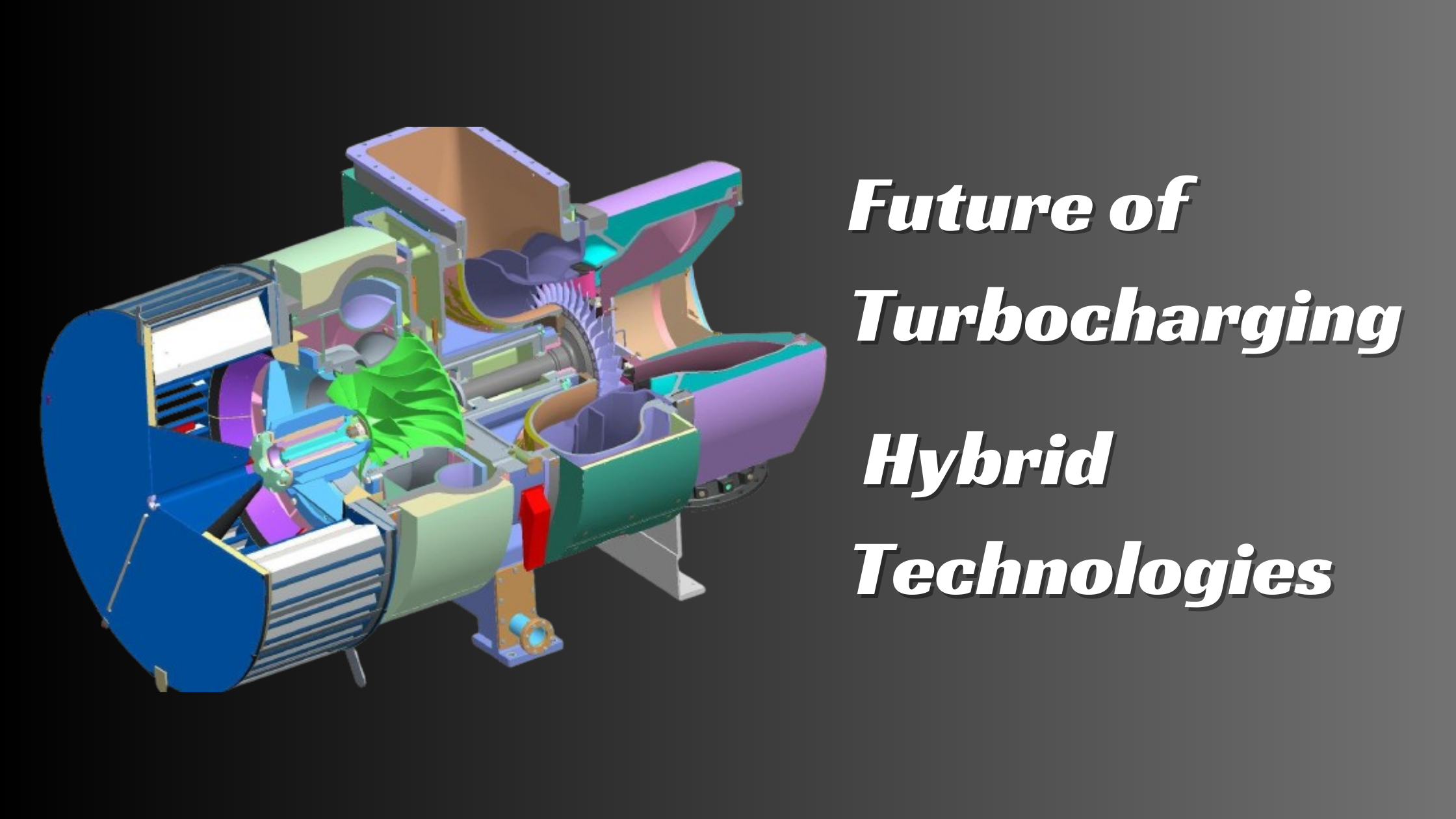The Future of Turbocharging and Hybrid Technologies
The automotive industry stands at the precipice of a revolutionary shift, with turbocharging and hybrid technologies leading the charge towards a future that promises enhanced performance and a significant reduction in environmental impact. This convergence of innovation is not merely a trend but a testament to the industry’s commitment to addressing the global call for sustainability without compromising on the thrill of driving.
A Brief Overview of The Evolution of Turbocharging
Turbocharging, a technology that has been around for over a century, has primarily been associated with increasing the power output of engines. By forcing more air into the combustion chamber, turbochargers enable engines to burn more fuel and produce more power, significantly enhancing the vehicle’s performance. However, the application of turbocharging has evolved beyond just boosting power; it now plays a crucial role in improving fuel efficiency and reducing emissions. As we move into the 21st century, turbocharging continues to undergo innovations, making it more relevant than ever in environmental sustainability and efficiency.
The Rise of Hybrid Technologies
Parallel to the advancements in turbocharging, hybrid technologies have emerged as a beacon of hope for reducing vehicular emissions. Hybrid vehicles combine an internal combustion engine with an electric motor and offer a balanced solution by leveraging both technologies’ strengths. The synergy between the combustion engine and the electric motor allows lower fuel consumption and reduced emissions while providing the power and range consumers expect from their vehicles. As environmental regulations become stricter and consumer preferences shift towards sustainability, hybrid technologies become increasingly pivotal in the automotive industry’s strategy.
The Integration of Turbocharging and Hybrid Technologies
Integrating turbocharging with hybrid technologies represents a remarkable fusion that could redefine automotive performance and environmental stewardship. This combination allows for smaller, more efficient engines that do not sacrifice power or performance. Turbocharged hybrid vehicles benefit from the instant torque provided by electric motors, complemented by the high power output of turbocharged engines, offering an exhilarating and eco-friendly driving experience.
Moreover, this integration is crucial in addressing one of the critical challenges of electric vehicles (EVs): range anxiety. By augmenting the electric motor with a turbocharged engine, manufacturers can offer cars that boast extended range without the need for frequent recharging stops, thus making them more appealing to a broader audience.
The Environmental Impact
The environmental benefits of combining turbocharging with hybrid technologies are profound. These vehicles significantly reduce fuel consumption and emissions by enhancing engine efficiency and leveraging electric power. This is crucial to achieving global emission reduction targets and combating climate change.
As the technology progresses and becomes more widespread, the cumulative environmental impact could be monumental, marking a significant stride towards a more sustainable future. In addition to improving fuel efficiency and performance, turbochargers have another green attribute to consider. If a turbo unit breaks down, which can happen over time due to wear and tear, the turbocharger can be remanufactured. Reconditioned turbochargers are as good as brand-new units and represent the ultimate green move in a reuse and recycle circular economy.
Challenges and Opportunities
Despite the promising outlook, integrating turbocharging and hybrid technologies faces several challenges. Manufacturers must overcome high development and production costs, complex engineering requirements, and consumer acceptance. However, these challenges also present opportunities for innovation, cost reduction through economies of scale, and public awareness campaigns to educate consumers about the benefits of these technologies.
Moreover, government policies and incentives are critical in accelerating the adoption of turbocharged hybrid vehicles. Governments can encourage manufacturers and consumers to embrace these environmentally friendly technologies through subsidies, tax incentives, and infrastructure development.
Steering Towards a Sustainable and Electrifying Future
The journey towards integrating turbocharging with hybrid technologies represents more than just a technological evolution; it is a pivotal shift in the automotive industry’s approach to harmonising performance with environmental stewardship. As we venture deeper into the 21st century, this integration is not merely an option but a necessity, driven by the urgent need to address climate change and the global demand for more sustainable transportation solutions.
The promise held by the fusion of turbocharging and hybrid technologies extends beyond immediate environmental benefits. It signifies a broader cultural and economic shift towards valuing sustainability as much as performance. This paradigm shift presents an opportunity for automotive manufacturers to redefine their brand identities, aligning themselves with the values of a more environmentally conscious consumer base. Manufacturers are not just contributing to a greener planet by leading the charge in this transition. Still, they also position themselves as forward-thinking, responsible entities in consumers’ and stakeholders’ eyes.
However, the path to this future is paved with challenges that require collective action and collaboration. The role of governments and regulatory bodies in creating a conducive environment for these technologies cannot be overstated. These entities can significantly lower the barriers to adoption through strategic policy-making, investments in research and development, and the establishment of a comprehensive infrastructure for electric vehicles. Equally important is the role of consumers, whose preferences and demands will ultimately drive the market. Educating the public about the benefits of turbocharged hybrid cars, including their economic advantages in the long term, is crucial in accelerating their acceptance and adoption.
Moreover, the automotive industry must continue innovating and investing in research to overcome these technologies’ technical and economic hurdles. The development of more efficient and compact turbochargers, advancements in battery technology, and the exploration of alternative fuels are just a few areas where continued innovation can yield substantial dividends. Additionally, collaboration between automotive manufacturers, technology companies, and academic institutions can foster an ecosystem of innovation that propels the industry forward.
In Conclusion
In conclusion, integrating turbocharging and hybrid technologies is a beacon of hope for a sustainable automotive future. While fraught with challenges, this journey has opportunities to drive significant environmental, economic, and societal benefits. As we stand at this crossroads, the collective actions of manufacturers, governments, consumers, and innovators will determine the pace at which we advance towards a future where high performance and environmental responsibility are not mutually exclusive but are instead two sides of the same coin. Embracing this future requires technological innovation and a shared commitment to a greener, more sustainable world.

















